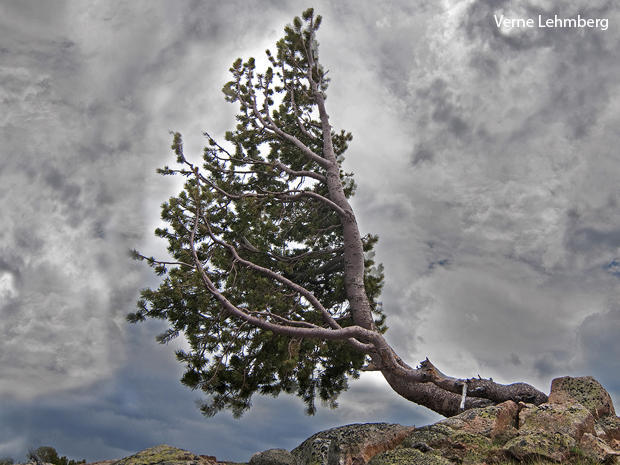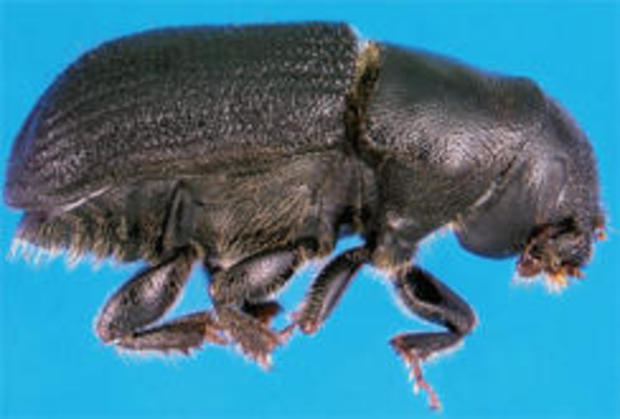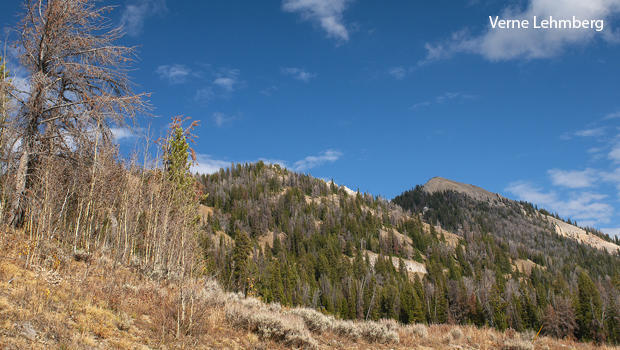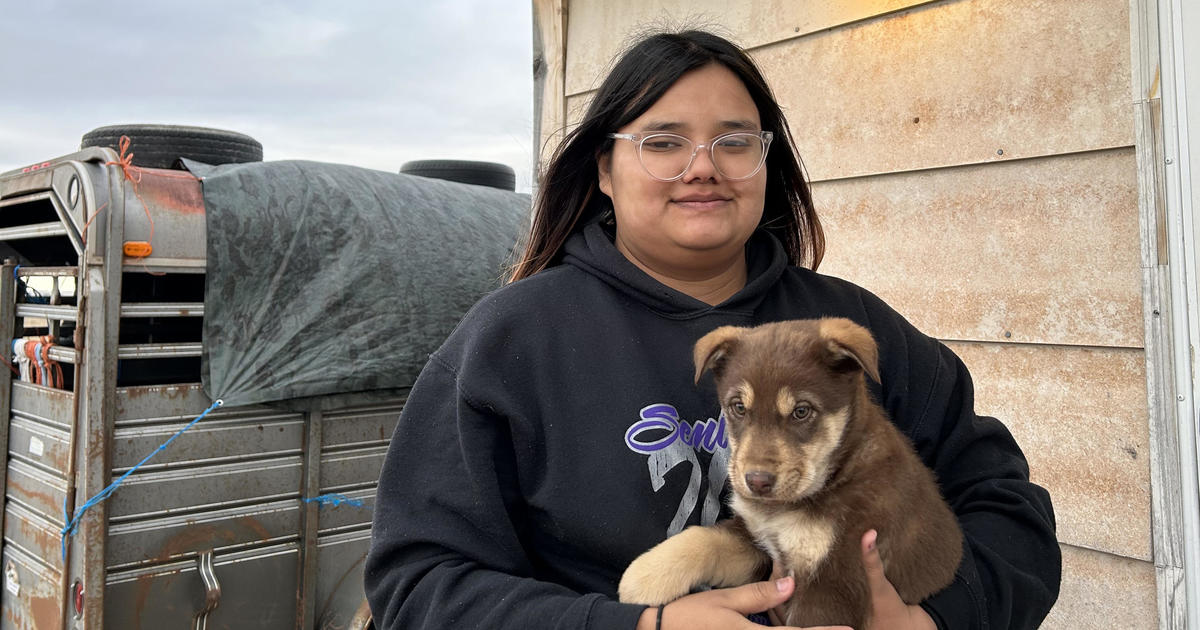Nature up close: How an insect is key to grizzly bears' survival
By "Sunday Morning" contributing videographer Judy Lehmberg.
In 2016, during the fall hunting season, an elk hunter shot and killed a female grizzly about 15 miles north of Yellowstone National Park. Luckily he did not shoot her two orphaned cubs. Because they were less than a year old, most people did not give much hope for their survival. But the following spring they appeared alive and healthy after their winter hibernation. They hadn't had enough time to get a complete education from their mom, but they had each other, and they were lucky enough to live in an area north of the park where people tolerated bears (they didn't leave food out for them, they had bear-proof trash cans, they locked up their grain and pet food, and the bears were allowed to go about the business of being bears). The bears were familiar with people, but they were in no way dependent on them and did not look to them for food.
Word of the cubs' survival spread among bear lovers and they became celebrities. We, and other bear watchers, spent hours and hours watching them. The cubs spent the majority of their time grazing on vegetation and ignoring us. We never saw them hunt any animal. In fact, when they saw cows they literally ran away from them. We realized they were actually afraid of cows, which is a very good thing if you are a grizzly bear living in ranching country.
Once they survived that first winter without their mom, we became hopeful they might even grow up to produce cubs of their own. (They were both female.) But in the fall of 2018 the not-quite-three-year-old bears ran out of caraway seeds (their primary food source) at the worst time, when they were in hyperphagia. Because grizzlies hibernate for six or so months of the year, they must build up fat reserves to survive the long fast. To build up those reserves they eat as much high-calorie food as they can in the fall.
They had another problem as well: it was elk hunting season and larger bears were attracted into the gut piles hunters were leaving in the area. The two cubs were running out of options. They needed food and they needed a lot of it.
They left the larger bears and wandered down into Paradise Valley, a beautiful valley surrounding the Yellowstone River. The valley is an extremely attractive place for many species, from trout to bald eagles and from deer to humans (as well as their livestock). In Paradise Valley the orphans found non-bear-proof trash cans, apples on the ground from apple trees, unprotected grain stores and other food attractive to hungry bears. They probably ran into cows, too, but never bothered any of them.
In spite of the fact that they never threatened a human, never killed a cow or did anything else "bad," Montana Fish, Wildlife and Parks decided they were a nuisance and could be a threat to humans.
They trapped the bears and killed them.
They did not consider what could have been done by local residents and bear advocate groups to protect them from human food sources. They did not consider moving them to the Crazy Mountains further north where they may have had a chance to survive away from people. They just killed them for the only "sin" they had ever committed – the sin of being grizzly bears.
Bear migration
In today's world of ever-expanding human populations, global warming, habitat loss and radically-declining wildlife populations, special interest groups have been advocating to remove the grizzly bear from the Endangered Species List. Grizzly bear researchers agree that to have a genetically viable and diverse population in the lower 48 states, a minimum of 3,000 to 5,000 grizzly bears is necessary. The current Idaho, Montana and Wyoming population, the only remaining population of grizzlies in the Lower 48 states, stands at about 1,500 animals. Some ranchers and other anti-grizzly interests would argue their numbers are higher, but science does not back up those claims. Part of the reason for the misguided belief that there are more grizzlies is that they are running out of food at higher elevations and moving down to where they more frequently come into contact with people, human food sources, and livestock.
Two hundred years ago grizzly bears were plains animals. As humans encroached on their habitat they were forced up into higher and higher elevations, until the only viable populations in the Lower 48 were in the Greater Yellowstone Ecosystem; Glacier National Park and surrounding areas; the Bob Marshall Wilderness Area in Montana; and a few mountainous parts of Idaho.
Much of the current grizzly bear movement occurs in the fall when they go into hyperphagia. As they move to lower elevations, out of protected areas, they are increasingly at risk of encountering humans and their livestock – livestock which, evidence suggests, is more important, or at the very least has more political clout, than grizzly bears. Part of that is evidence is the number of grizzlies being killed by humans has increased, from a low of fewer than 15 in 2006, to 51 in 2018. Many of those bears, even though they are on the Endangered Species List, have been legally killed for "livestock depredations." A population that is already small and spread out cannot sustain that mortality rate and remain healthy, especially one that reproduces as slowly as grizzlies.
Food source decline
The major reason grizzlies are moving to lower elevations in the fall, and therefore coming into contact with humans and their cattle, is the catastrophic decline of whitebark pine trees in the last 30 years. Whitebark pines were one of the grizzlies' main high-calorie food sources in the fall, as they gorge on the seeds found in whitebark pine cones. But the trees have been dealt a devastating blow from a natural predator, a predator it has successfully coexisted with for eons: bark beetles.
Prior to global warming, whitebark pine and mountain pine beetles (Dendroctonus ponderosae) were basically locked in an arms race. Every year the beetles killed some trees but then winter came and killed the beetles. Now, due to warmer winters, the pine bark beetle population has exploded. The whitebark pines have been killed in such huge numbers that they are now considered functionally extinct – that is, they are no longer a viable part of the Northern Rocky Mountain ecosystem. They aren't all dead, but at least 80% of them are, and that number is rapidly increasing.
As rapidly as global warming has decimated whitebark pine trees, there may no way to save them. But it isn't too late for grizzly bears. With more bear-proof trash cans, education and maybe even some conservation easements, we should be able to live successfully with at least a few thousand of them.
Judy Lehmberg is a former college biology teacher who now shoots nature videos.
For more:
- Judy Lehmberg (Official site)
- Judy Lehmberg's YouTube Channel
To watch extended "Sunday Morning" Nature videos click here!






